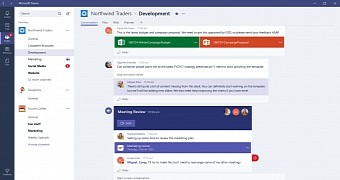Microsoft Teams is a service whose adoption has skyrocketed since January 2020, and you can easily figure out why.
Given a big part of the world started working remotely, software like Microsoft Teams became a must-have. Microsoft obviously noticed the growth potential of Microsoft Teams right away, so the service has received plenty of improvements lately.
A massive performance update was announced this week, with Microsoft revealing that it managed to reduce the power consumption during meetings by up to 50 percent.
Improvements already live today
That’s certainly an impressive figure, and Microsoft explains that doing it wasn’t by any means easy. The company looked at the resources that are being used during a meeting, including video rendering, video capture, and various optimizations, and then tried to specifically optimize every little process to reduce the power consumption.
“During our evaluation of the video capture process, we focused on camera optimization to reduce demands on the CPU when using video in meetings, improving configurations, reducing code complexity for auto-exposure, auto-white balance, auto-aliasing, resulting in power draw reduction from the onboard camera and stability enhancements, and face detection processes,” the company recently explained in a technical analysis of this achievement.
“Then, we turned to video rendering, particularly for meetings with many participants, where the users receive a video stream for each participant displayed in the Teams client. Incoming videos can have different resolutions that require the client to rescale each. A simple 3x3 video grid once required nine distinct rendering operations. By combining the streams and composing them into a single video, we have been able to consolidate operations in video rendering and significantly reduce the power requirements for each device used.”
All these improvements are available today for all Microsoft Teams users, regardless of the platform where they are using the service to connect to their workmates.

 14 DAY TRIAL //
14 DAY TRIAL //